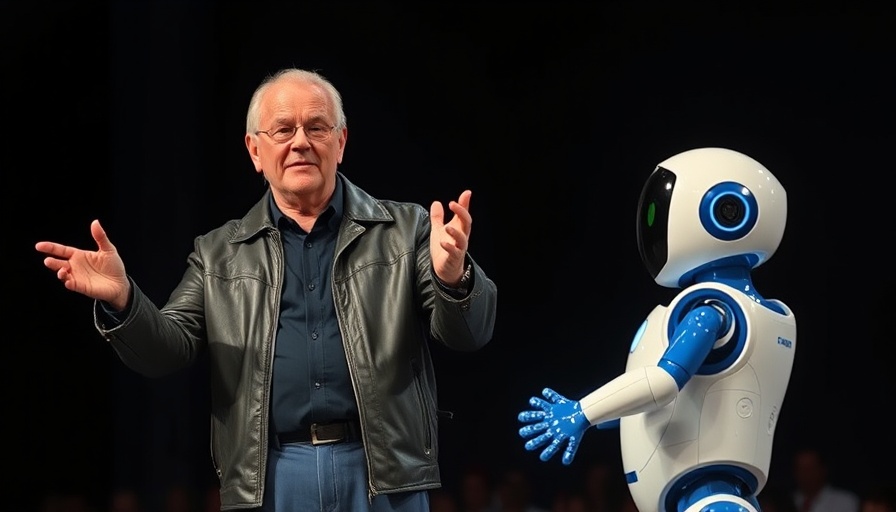
Disney's Quantum Leap in Robotics: A New Era Dawns
Disney has long enchanted audiences with its magic, but a new wave of technology is transforming the company’s interaction with fans. Their latest innovation involves a pioneering collaboration with Nvidia and Google DeepMind, which aims to develop Newton, an advanced physics engine that empowers robots, including the adorable BDX droids that captured attention during Nvidia’s GTC 2025 announcement.
What is Newton and Why Does it Matter?
At its core, Newton is no ordinary physics engine; it’s designed to simulate robotic movements in realistic contexts, greatly enhancing how robots perform tasks. Sensors and AI work in tandem enabling these machines to understand and interact with their environment, leading to more lifelike interactions.
Nvidia CEO, Jensen Huang, announced, “The age of generalist robotics is here,” emphasizing that Newton will give developers the tools to program robots that can engage in complex tasks—be it handling food, navigating crowds, or even playing catch with theme park visitors.
Bringing Characters to Life: A Journey Beyond Animatronics
Historically, Disney has relied on animatronics to thrill visitors. The BDX droids are an evolution of this concept, intended to be part of planned attractions at Disney theme parks. Kyle Laughlin, Senior VP at Disney Imagineering, stated, “We’re committed to bringing more characters to life in ways the world hasn’t seen before.” This sentiment encapsulates Disney's vision of merging tech and storytelling flawlessly, creating immersive experiences where characters can interact dynamically with guests.
Google DeepMind: Intel Behind the Curtain
The collaboration with Google DeepMind adds another layer of sophistication to this partnership. DeepMind brings AI-enhanced capabilities that allow robots to learn and adapt, meaning these droids won’t just follow programmed routines; they will evolve based on interactions. This integration allows for nuanced character behaviors that can make visits to Disneyland or Disney World even more memorable.
A Look to the Future: The BDX Droids in Action
Imagine walking through a Disney park and encountering these Zorbi-warriors—performing complex maneuvers, responding to the environment, or even participating in light-hearted dialogues with park-goers. The upcoming showcases aim to reveal how the BDX droids will integrate with attractions, potentially changing the way Disney engages with its audience.
Future Challenges and Opportunities
As exciting as these developments are, they also present challenges. The potential for errors in robot interaction with guests must be carefully monitored. Developers will need to ensure that the AI functions not only efficiently but safely. Additionally, deploying advanced robots at scale poses logistical challenges. However, the payoff could be immense: turning every park visit into a new adventure filled with interactions previously relegated to the realm of futurism.
What This Means for Robotics and Entertainment
This partnership signifies more than just a tech upgrade for Disney; it signals a shift in how we perceive entertainment and robotics. As these innovations roll out in the coming years, they may redefine our interactions across various fields—from the ways brands connect with consumers to potential uses in live events and education.
Conclusion: Embracing the Magic of Modern Robotics
Ultimately, Disney, Nvidia, and Google DeepMind’s initiative to integrate smart robotics into the park experience reflects broader technological advancements. These developments hold incredible potential to enhance storytelling in ways we have never imagined. While full-scale implementation is on the horizon, the excitement surrounding these technologies is palpable—this isn’t just about robots; it’s about a future where engaging storytelling and technology come together to create extraordinary experiences.
 Add Row
Add Row  Add
Add 




Write A Comment